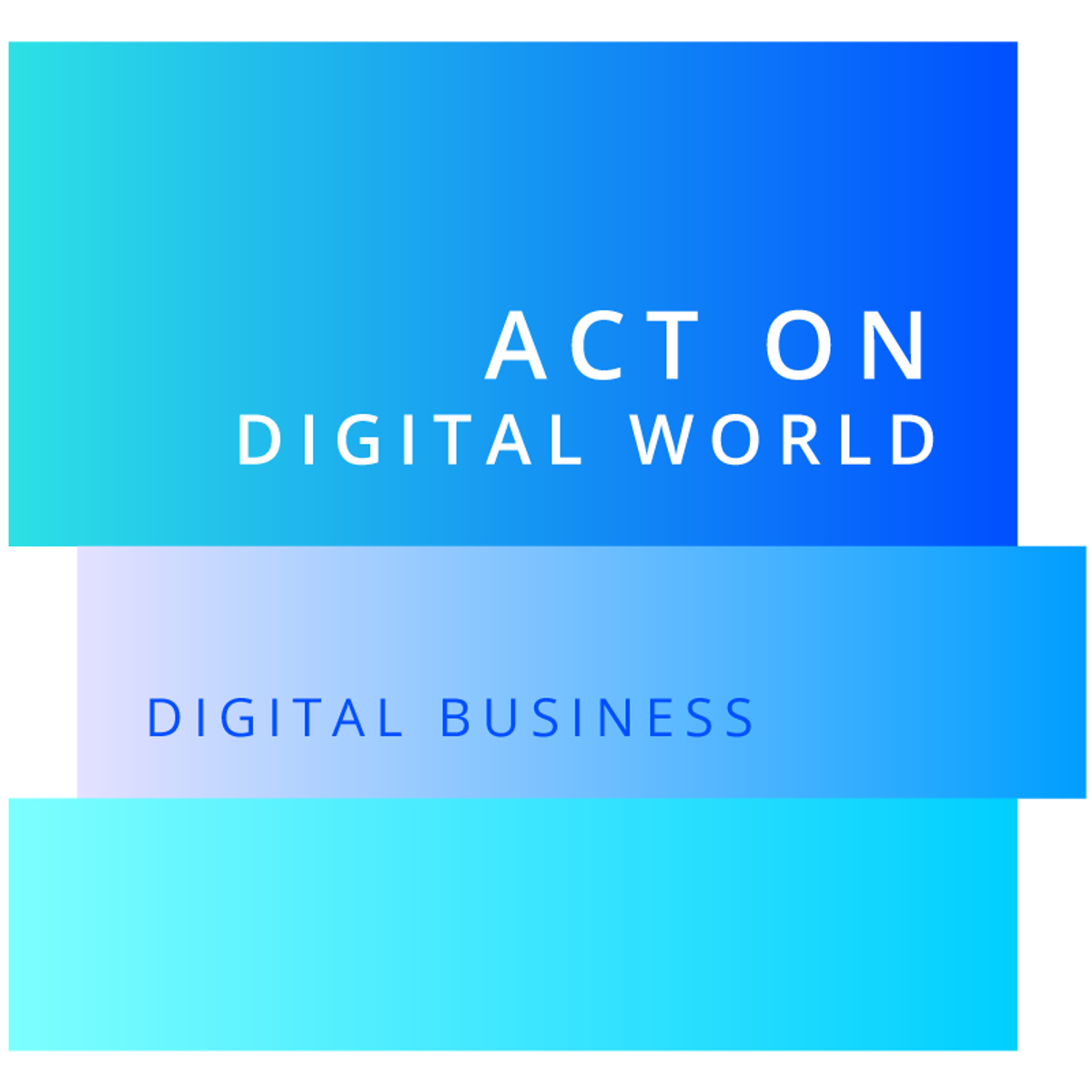Back to Courses









Entrepreneurship Courses - Page 2
Showing results 11-20 of 222

Design, Format, and Presentation in Microsoft PowerPoint
At the end of this project you will be able to design, format, and present an exciting PowerPoint presentation. First, you will learn how to choose a design to start your PowerPoint presentation. Then, you will get to know different format options to make changes to text and objects. You will also learn all about presenting your PowerPoint presentation. Creating a Microsoft PowerPoint knowing all these features will allow you to be able to have an easy time during the creation of your PowerPoint. Attractive designs allow your audience to stay focused and interested. Great formatting allows your content to be presented in a professional and visually appealing way. Tips and tricks about presenting, allow you to have an easier time presenting as well as entertain your audience.
The goal of this project is to teach you how to be successful with your presentations and how to make the process of creating more efficient.

How To Create a Website in a Weekend! (Project-Centered Course)
What you’ll achieve:
In this project-centered course*, you’ll design, build, and publish a basic website that incorporates text, sound, images, hyperlinks, plug-ins, and social media interactivity. We’ll provide you with step-by-step instructions, exercises, tips, and tools that enable you to set up a domain name, create an attractive layout for your pages, organize your content properly, ensure that your site functions well across different operating systems and on mobile devices, keep your site safe, and finally, let people know your site is online. We’ll even show you how to track your visitors. Throughout the course, you'll engage in collaboration and discussion with other learners through course forums and peer review.
Once you complete your first website project using Wordpress, you can move on to our optional, extended module that covers more advanced techniques such as using a simple text editor, coding in HTML, CSS, and Javascript, and more.
What you’ll need to get started:
This project-centered course is designed for learners who have little or no prior experience developing a web site. You will need a computer with a stable Internet connection. We’ll use Wordpress to get you started, provide lots of downloadable examples, and guide you through the process of giving and receiving constructive peer-to-peer feedback.
*About Project-Centered Courses: Project-centered courses are designed to help you complete a personally meaningful real-world project, with your instructor and a community of learners with similar goals providing guidance and suggestions along the way. By actively applying new concepts as you learn, you’ll master the course content more efficiently; you’ll also get a head start on using the skills you gain to make positive changes in your life and career. When you complete the course, you’ll have a finished project that you’ll be proud to use and share.

How to Design a Space-Saving Table Using SketchUp
In this 1h 30 minutes long project-based course, you will learn how to get inspired and generate new ideas, turn your idea into full concept, as well as visualizing your product using Sketch Up
Note: This course works best for learners who are based in the North America region. We’re currently working on providing the same experience in other regions.

Create a Flyer Using Microsoft Word
After successfully completing this project, you will have created a visually appealing flyer using Microsoft Word.
While building a flyer, you will use various features in Word. You will use the Insert feature to insert a picture in a document. Other features you will use include applying styles to text and pictures. You will insert a numbered list, convert it to a bulleted list, and then modify the bullets. You will also discover how to apply a theme to a document.

Digital business - Act on the digital world
The idea that digital technology triggers profound change in companies is largely accepted. There is indeed no question that the digital world is profoundly changing business life. Everyone is now on the same page. But with the digital world come a lot of misconceptions and buzzwords. You can no longer get by with these commonplaces or general ideas. You need to gain a detailed understanding of the main new management paradigms: new marketing approaches, the role of data in data-driven management, large businesses’ struggle to innovate, etc. This will give you precise insight into changes at work. Without precision, it is difficult to understand. Without understanding, it is impossible to act.
This module will tell you how.
Week 1 : Big Picture
Week 2 : Operational Area
Week 3 : Focus Area

Becoming a Social Entrepreneur: Getting Started
Do you have an idea that could help solve a societal problem? Are you wondering if starting a social enterprise is the best way to go forward? You are thinking about becoming a social entrepreneur!
In this course, you’ll critically examine what makes for a good idea, and whether that idea requires starting a new business. You’ll craft a personal immersion plan while considering different ways to create impact. You’ll explore the personal challenges and connections to your life’s purpose before deciding to commit to becoming a social entrepreneur.
Each week, you’ll see and hear from 11 real-life social entrepreneurs, working around the world, and sharing the lessons they’ve learned as well as the mistakes they’ve made and how you can overcome them. Among their experiences are: providing clean water in India and the Dominican Republic, warming premature babies without incubators, improving education in Africa and Detroit, and providing affordable fresh food to low-income residents of Los Angeles. Ultimately, you’ll be able to decide whether your idea is necessary for the world, and if starting a social enterprise is the right path for you. This course is based on the book “Becoming a Social Entrepreneur: Starting Out, Scaling Up and Staying True” by Michael Gordon.

Satisfaction Guaranteed: Develop Customer Loyalty Online
You made it! Satisfaction Guaranteed: Develop Customer Loyalty Online is the seventh and final course in the Google Digital Marketing & E-commerce Certificate. In this course, you’ll explore strategies for building customer loyalty in e-commerce. You’ll also explore specific tools to develop and maintain client relationships. At the end of the course you’ll work through a scenario that demonstrates your ability to deliver a successful e-commerce strategy. Finally, you’ll wrap up the course by building professional development skills. We encourage you to complete courses 1–6 before beginning this course because they provide the foundation necessary to complete the activities at the end of this course.
Google employees who currently work in the field will guide you, providing hands-on activities and examples that simulate common digital marketing and e-commerce tasks while showing you some of the best tools and resources used on the job.
Learners who complete the seven courses in this program will be prepared to apply for entry-level jobs in digital marketing and e-commerce. No previous experience is necessary.
By the end of this course, you will be able to do the following:
- Identify common strategies for building customer loyalty in e-commerce
- Understand how to successfully manage client relationships and measure satisfaction
- Monitor an e-commerce store’s performance
- Update an e-commerce store based on data
- Complete a portfolio scenario to prepare for job interviews
- Find, apply for, and prepare for interviews and jobs
- Put together a portfolio and/or resume to present to employers

Building Fintech Startups in Emerging Markets
Starting a small business in an emerging market can be very rewarding. Many of entrepreneurship opportunities in emerging markets arise out of necessity, or the drive to solve a real need or a social problem. Thus emerging markets often offer huge opportunities for disruptive innovation. Entrepreneurship has contributed to economic growth and been able to respond to social problems, helping some communities prosper. With the rise of fintech, financial solutions using technologies such as the cloud, blockchain and machine learning have by-passed or partnered with established financial institutions to serve new markets.
This course takes us through the basics from “What is entrepreneurship?” to applying commonly used business planning tools, such as design thinking and business model canvas. Design thinking is a methodology that encourages startups to focus on user-centric products and services. There are also insights on topics like regulation, intellectual property, funding and growth that are important for startups.
I’ve invited along experts who teach and support entrepreneurs. This includes some really interesting people in various stages of their start-up business development. We will be talking with Zlto (a digital currency), Yoco (mobile payments), Proof of Steak (alternative asset investment) and Kuba (a digital ‘middleman’ for small businesses) to name a few.
As we will learn, there is no such thing as being ‘ready’ or, choosing the ‘perfect time’ to become an entrepreneur. You are already one, so let’s take the next steps on your entrepreneurial journey by joining your peers around the world on this course. This course is for everyone, and not only those interested in only fintech.

Entrepreneurship 2: Launching your Start-Up
Once you have a prototype and a clearer vision of the opportunity, you’ll need to create a small organization to discover how to create a repeatable and scalable business model. Designed to provide you with a comprehensive overview of the critical components of creating a start-up, Entrepreneurship 2: Launching the Start-up, provides practical, real-world knowledge about the lean approach, the minimum viable product, when to pivot, when to quit your day job, the art of the pitch, building and managing a team, allocating equity, and building your external team, advisory board members, professional services, and entrepreneurial strategy. At the end of this course, you’ll be able to create a strategy for launch, including knowing who you need to hire, how to manage them to provide the greatest value, and what legal aspects are involved. You’ll also be prepared for Entrepreneurship 3: Growth Strategies.

Entrepreneurship
An entrepreneur is someone who is always on the lookout for problems that can be turned into opportunities and finds creative ways to leverage limited resources to reach their goals. In this course, learners will be introduced to the fundamental concepts, theories, and frameworks of entrepreneurship and learn how to apply them within the context of the world's largest market: China. Through cases, articles, and experiential learning, learners will gain expertise in how to identify and evaluate opportunities; interpret, analyze, and build financial models to enable high-growth ventures; practice living life as an entrepreneurial leader; and create a new product or service for the Chinese market.
Popular Internships and Jobs by Categories
Find Jobs & Internships
Browse
© 2024 BoostGrad | All rights reserved